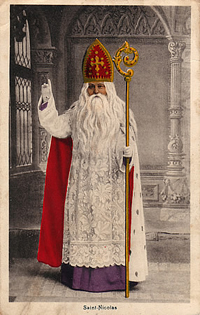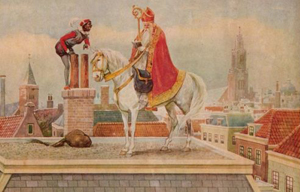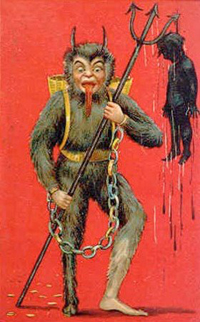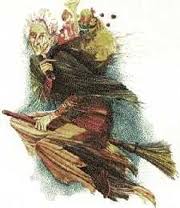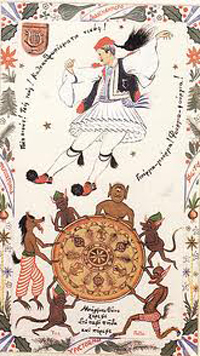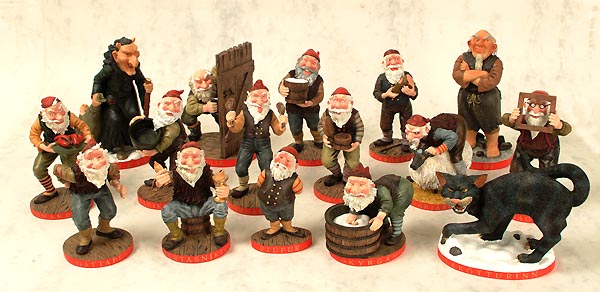The Dark side Of European Christmas Traditions.
|
While digging around the Weird Wide Web for a Captain's Blog post about the odd little poop related Christmas traditions in Catalonia, of El Caganer and Tió de Nadal, I discovered a number of European traditions based around Christmas that are weird, dark and even a bit creepy. As if the post Catalonia's Christmas Crapper, wasn't weird enough the discovery of strange traditions from around Europe speak volumes of early Christian and long held pagan traditions of behind the sanitized consumerist Coca Cola Christmas we see portrayed in the media.
We all know the many names that Santa Claus goes under, that in the UK we call him Father Christmas, and in the famous poem "Twas The Night Before Christmas" he's referred to as Saint Nicholas. Most know that the character of Santa, is a mish-mash of folklore figures from around Europe. Across the continent, there are many traditions based on a character derived from the generous Greek saint, whose feast day is the 6th or December. He became merged with the British personification of Christmas from the Middle Ages, Father Christmas. Eventually the whole lot being neatly wrapped-up and labelled the Santa Claus we recognise today, around late 19th and 20th century America, |
|
In European tradition Saint Nicholas often has a "darker" companion. In the Netherlands and other parts low country Europe, he is accompanied by Zwarte Piet (Black Peter). Depicted as being from Moor from Spain, represented as someone in black-face make-up (something that courts a lot of controversy today). Over time Black Peter has become a figure of fun, to amuse children. But he started as a darker side of Saint Nicholas, as church leaders felt uncomfortable with the duality of the Saint. The idea of dark companions of Saint Nicholas stem from the pre-Christian folklore of Wôdan, the Germanic pagan god, and his Wild Hunt across the skies of North-Western and Central Europe.
|
Riding the white horse Sleipnir Wôdan flew through the air as the leader of the Wild Hunt. Accompanied by two black ravens Huginn and Muninn, who would listen like Black Peter at the chimney to tell Wôdan about the good and bad behaviour of the people in the house.
In the Middle Ages, Saint Nicholas was shown taming a chained devil, who was sometimes represented as being black. Black Peter and other companions in Germanic Europe, are thought represented the chained devil, forced to assist Saint Nicholas. A devil as a companion can be found in the Austrian Saint Nicholas tradition, in the infamous character of Krampus.
In the Middle Ages, Saint Nicholas was shown taming a chained devil, who was sometimes represented as being black. Black Peter and other companions in Germanic Europe, are thought represented the chained devil, forced to assist Saint Nicholas. A devil as a companion can be found in the Austrian Saint Nicholas tradition, in the infamous character of Krampus.
|
Krampus is a devilish looking beast from the folklore of Alpine countries, who punishes naughty children. In extreme versions of the story, Krampus is said to capture naughty children in his sack and carry them away, to kill them in awful and grisly ways. A figure like Krampus goes back much further than Christian tradition, and can be traced back to pagan Horned God, which existed in many pre-Christian belief systems. He is sometimes shown carrying a bundles of birch branches, to "birch" children with. A symbol of ancient pagan initiation rites.
Since his association with Saint Nicholas, Krampus is shown as being chained, as a reference to his servitude to the saint, and harking back to not only the Middle Ages representation of Saint Nicholas taming the devil, but also to the Christian domination over paganism. Another figure of the Alpine regions is Perchta, who appears during the Twelve Days of Christmas. And who sometimes lead the Wild Hunt. She can appear in both a beautiful and an ugly form. The former brings good luck and gifts to teh well behaved, the latter would slit open the bellies of the misbehaved, removing the guts and stuffing the hole with straw and pebbles. |
|
In Norway on Christmas Eve they hide their brooms. Why? Because they believe that this is the night when witches and evil spirits taunt the living. Coming out in search for brooms to steal from people, that they will fly off on. So Norwegian women hide away all the brooms, so witches can't steal them, and the men shot guns into the air in order to frighten off the evil spirits. Meanwhile in Italy, they have the witch La Befana who arrives on the 5th of January (the eve of the Ephinany) who flies in on her broomstick to deliver treats to good children. Like Santa (Babbo Natale in Italy), she comes down the chimney doling out gifts to the good and a lump of coal to the bad. Similar to the tradition in Britain of how Father Christmas punishes bad children. Originating in the 13th century, based on the Roman goddess of the New Year Strenua, the story of La Befana is that she missed the birth of Christ, and so makes up for her mistake she will forever visit children, delivering gifts.
|
|
Down in South Eastern Europe, in countries like Greece and Turkey they have the evil goblins known as Kallikantzaroi. The malevolent kallikantzaros are believed to dwell underground but come to the surface during the Twelve Days of Christmas, from 25th December to the 6th of January. During the rest of the year the kallikantzaroi remain underground, sawing away at the mythical "world tree", hoping that it (and the Earth) will collapse. However as Christmas Day dawns they forget about the tree and are able to come up to the surface to cause mayhem. Being forced back underground as the sun begins to move across the sky of the 6th of January. In their absence the world tree has healed itself, and so they must start sawing at it again.
The look of these creatures, what they do while on the surface and their origins vary from country to country. One thing that is for certain is that they have ancient pre-Christian origins. One theory about their origins, is that they are related to the Roman winter festival of Bacchanalia, and the Greek festival of Dionysia. In that the revellers of these festivals would often dress-up animal masks. The costumes made them appear both bestial and humanoid, which is a common description of the kallikantzaroi. And that these costumed revellers and their outrageous behaviour became the basis for these goblins. |
|
Finally to Iceland, and their folklore traditions of the Yule Lads and the Yule Cat. The Yule Lads are said to be the sons of the giantess of the Icelandic mountains called Grýla, who as Christmas approaches leaves her cave in the lava fields of Dimmuborgir in search of naughty children. The Yule Cat is her pet, a huge and vicious monster of a thing. The cat will eat anyone that has not been given new clothes to wear before Christmas Eve. It thought that the cat was used an incentive for farm workers to work hard to earn new clothes or be eaten by the Yule Cat.
|
Grýla's sons, the Yule Lads have become the Icelandic equivalent of Santa Claus. In modern depictions they are often shown wearing Santa suits, but more traditionally shown wearing traditional Icelandic medieval clothing. The are thirteen in number, and deliver gifts or rotting potatoes in the shoes of children on the thirteen days leading up to Christmas Eve. Each of the Yule Lads stays around for thirteen days. Each has a distinct character, from simply mischievous to being a child eater.
So there you go, some of the darker folklore traditions surrounding Christmas that still exist in many European countries. Hang-overs from pagan mythology, that people used to celebrate the period around the winter solstice before the spread of Christianity and the modern development of Christmas as we all know it today.
So there you go, some of the darker folklore traditions surrounding Christmas that still exist in many European countries. Hang-overs from pagan mythology, that people used to celebrate the period around the winter solstice before the spread of Christianity and the modern development of Christmas as we all know it today.

Xmas Games: Festive Freebies & Christmas Cassettes - In the heady days of early home computing, magazines often gave away festive themed cassettes to get us in the holiday spirit.
|
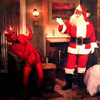
The Best Of The Worst Weird Christmas Movies - Let this be a warning to you. Clicking on this link means you are exposing yourself to some of the worst movies of all time. Happy Christmas!
|
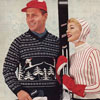
Take Off That Christmas Jumper, It's Not Ironic You Just Look A Twat! - Tis' the season for usually sane people to blow money on clothing they will only wear once, in order to look like an idiot.
|

Weird Toys Not To Be Found Under The Tree This Christmas - Before parents wrapped kids in cotton wool, and heeded recall warnings about dangerous toys. Things were much more fun!
|
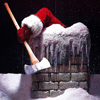
Top Ten: Christmas Slasher Movies - A festive season sub-genre of the slasher movie genre. And one that in many ways started it all with 1974's Black Christmas.
|
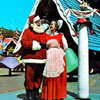
Santa Theme Park In California - Sat in the mountains of Southern California, Santa's Village was the first ever franchised theme park. Opened in 1955, a month before Disneyland.
|
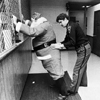
Bad Santa: 12 Creepy Christmas Clauses - From a drunk department store Santa to a happy hirsute hobo. We all love a dishevelled dude in a Santa suit.
|
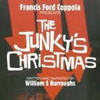
William S. Burroughs: The Junky's Christmas - A dark take of heroin addiction and redemption, in a short story my Burroughs. Later made into a short film produced by Francis Ford Coppola.
|

